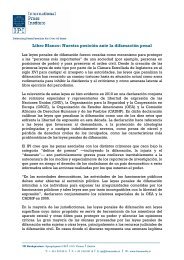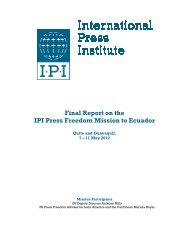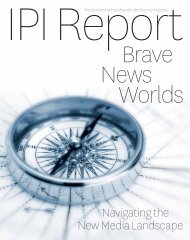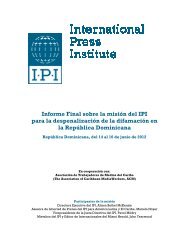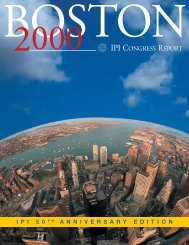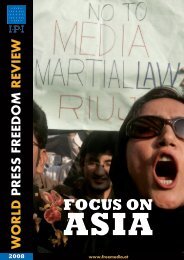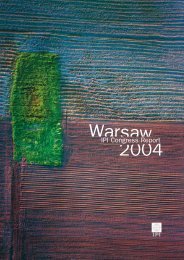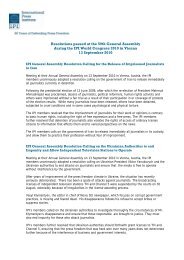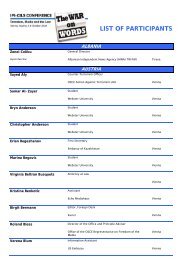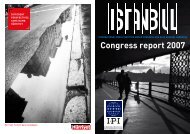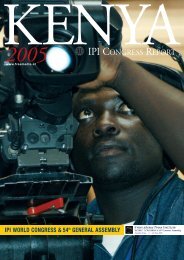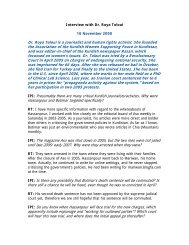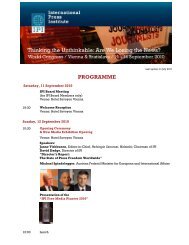Press Freedom and Globalisation - International Press Institute
Press Freedom and Globalisation - International Press Institute
Press Freedom and Globalisation - International Press Institute
You also want an ePaper? Increase the reach of your titles
YUMPU automatically turns print PDFs into web optimized ePapers that Google loves.
<strong>Press</strong> <strong>Freedom</strong> <strong>and</strong> <strong>Globalisation</strong><br />
individuals who have many ways to sue the media. In Ug<strong>and</strong>a it is the opposite.<br />
Government suppress media – as far as possible under sceptical donors’ monitoring.<br />
However, the level of press freedom in East Africa is increasing.<br />
Spread of media indicate media’s position in the societies, <strong>and</strong> is quite different:<br />
Comparing of spread of media<br />
in Sc<strong>and</strong>inavia <strong>and</strong> East Africa<br />
Proportion<br />
Sc<strong>and</strong>inavia : East Africa<br />
Number of TV receivers per 1000 inhabitant 35 : 1<br />
Number of radio receivers per 1000 inhabitant 6 : 1<br />
Circulation of newspapers per 1000 inhabitant 87 : 1<br />
Published book titles per 1000 inhabitants 196 : 1<br />
Journalistic capacity: Journalists per 1000 inhabitants 36 : 1<br />
The statistics confirm the existence of a big gap between the regions, <strong>and</strong> that print media<br />
are luxury items in East Africa. The figures on journalistic capacity indicate different<br />
media’s ability to fulfill their role. Different levels of press freedom increase the real gap in<br />
journalistic capacity.<br />
The NWICO debate exposed such differences between North <strong>and</strong> South. The<br />
debates exposed Western media’s dominance in agenda setting, definition of truth, <strong>and</strong> the<br />
West’s superiority in terms of technology. Although the debates have cooled down, the<br />
differences have increased between poor <strong>and</strong> rich countries.<br />
Links between the two regions support the spread of press freedom in East Africa.<br />
The Sc<strong>and</strong>inavian countries impose conditions of press freedom in their aid policy, <strong>and</strong><br />
also support to media projects in East Africa. There are also significant interactions<br />
through international press freedom NGOs. Yet, the most influential link is probably that<br />
both regions are exposed to the same international regimes on press freedom.<br />
In the context of globalisation, press freedom serves as a tool of political influence.<br />
<strong>International</strong> press freedom regimes can be legal conventions, institutions or NGOs. One<br />
such regime is the United Nations with its Article 19 on the Universal Declaration of<br />
126



